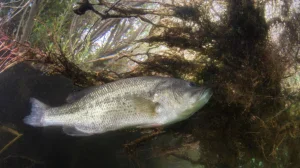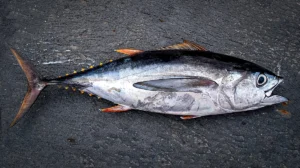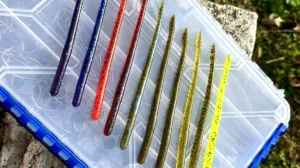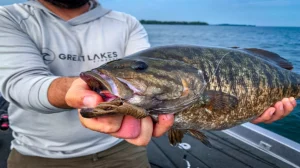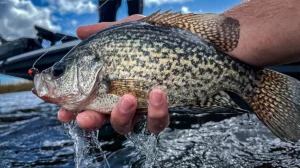Rock is a magnet for both smallmouth and largemouth bass, and while much of fall bass fishing content focuses on the bank, deep offshore rock structures can be the best deal going. Wired2fish contributor Dan Quinn locates a mega school of bass relating to a deep rock structure and demonstrates how to “milk the school” by properly fishing deep-diving crankbaits. This tactic is productive on northern natural lakes and reservoirs throughout the south and mid-south during the late fall-to-winter transition (think deep channel swings or bridge neck downs). *Additional links at the bottom.
TACKLE LISTING
- CRANKBAIT – Rapala Dives-To Series DT16, color: Pearl Grey Shiner
- ROD – 13 Fishing Envy Black III Crankbait Casting Rod, 7’9″ (Replaces Envy Black II)
- REEL – 13 Fishing Concept C2 Casting Reel, 6.8:1
- LINE – Sufix Advance Fluorocarbon, 12-pound
- SNAP – VMC Crankbait Snap, size 00
- TREBLE HOOK – VMC Bladed Hybrid Treble, size 4
- PLIERS – Rapala Mag Spring Pliers, 6-inch
Quinn’s 10 tips for catching more bass on deep diving crankbaits:
- Focus efforts on highly defined offshore, hard-bottom structures. Use mapping in conjunction with sonar to identify prime spots. These can be tricky areas to find. Consequently, bass are usually less pressured and easier to catch.
- Use a long, parabolic rod spooled with 10- or 12-pound fluorocarbon. A long and limber rod has the leverage to launch big crankbaits into outer space. Long casts allow you to get the bait to its maximum running depth and keep it there longer. Also, this setup is the perfect system for hooking bass without tearing hooks free. The rod and stretchy line (mono or fluoro) are ideal for penetrating sticky treble hooks. Resist the temptation to set the hook, instead, speed your retrieve and sweep into them.
- Position the boat upwind of the structure and cast downwind to the spot (wind against your back). Again, this is a play to achieve maximum casting distance.
- Select a crankbait that dives deeper than the target depth. “Over-cranking,” as it’s often referred to, is an excellent method to ensure bottom contact on the retrieve, which leads us to…
- Dig the bait into the bottom. A crankbait that’s grinding and deflecting across the bottom is a bait that’s going to get bit. Erratic deflections imitate evasive moves of prey and trigger reaction strikes as few lures can.
- Make repeated casts to a specific area after getting bit. Common sense says to cast back to where you just got bit, as there may be more bass — this is all too common in the fall and winter, where bass can form huge schools. Quinn instructs to immediately look for an easily identifiable landmark such as a tree, house, or dock. With the boat stationary, cast your bait to the landmark, and make repeated casts until you stop getting bit.
- Change casting angles to catch a few more. Don’t leave a productive area just yet. Change your casting angles relative to the fish to trigger a few more. It might be a LOT more bites!
- Change bait color or add a bladed treble hook. Color or adding a bit of bling in the form of flash can keep the bite going. Maybe you’ve tuned up the school and already changed casting angles. Perhaps the bass are willing to engage the crankbait but not eating the bait all that well. Easy and subtle changes can make a difference.
- Use snaps to facilitate quick bait swaps (lure running depth and color experimentation). It’s easy to get lazy if you have to retie each time you swap baits. Snaps can enhance bait action but, most importantly, make it easy to experiment with different baits.
- Swap out treble hooks. Sharp treble hooks can dull in a hurry as they’re constantly snapped against rock and other hard cover. Carry some replacement hooks in your boat and periodically take a moment to inspect and swap hooks should they become dull.
BOAT SETUP
- TROLLING MOTOR – Minn Kota Ultrex Trolling Motor
- SHALLOW WATER ANCHOR – Power-Pole Blades
- BOAT – Ranger Boats Z520C Comanche
- MOTOR – Mercury 250hp Pro XS FourStroke
MISC. GEAR
- BIBS – Rapala RAIN Bibs
- HAT – Rapala Red, White, and Blue Trucker Cap
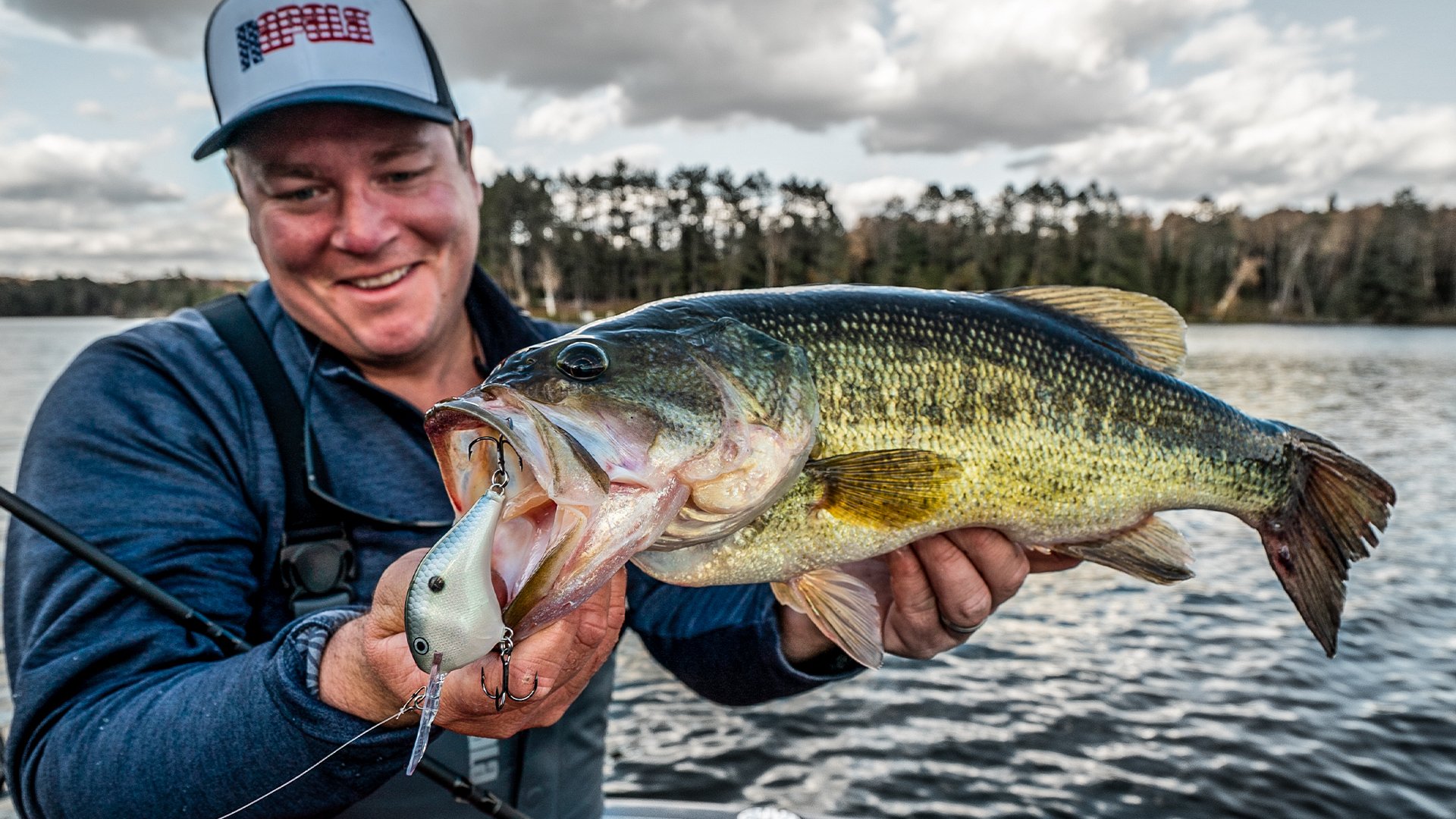

![[VIDEO] Why It’s Important to Change Casting Angles](https://www.wired2fish.com/wp-content/uploads/2025/12/cooper-ca-website-300x169.webp)
![[VIDEO] How to Catch Crappie During a Tough Bite](https://www.wired2fish.com/wp-content/uploads/2025/12/dechaine-website1-300x169.webp)
![[VIDEO] Connell’s Overlooked Tip for Catching Bigger Fish](https://www.wired2fish.com/wp-content/uploads/2025/12/connell-mayor-300x169.webp)
![[VIDEO] Top 5 Baits for Schooling Bass Success](https://www.wired2fish.com/wp-content/uploads/2025/12/cooper-dbs-website-300x169.webp)
